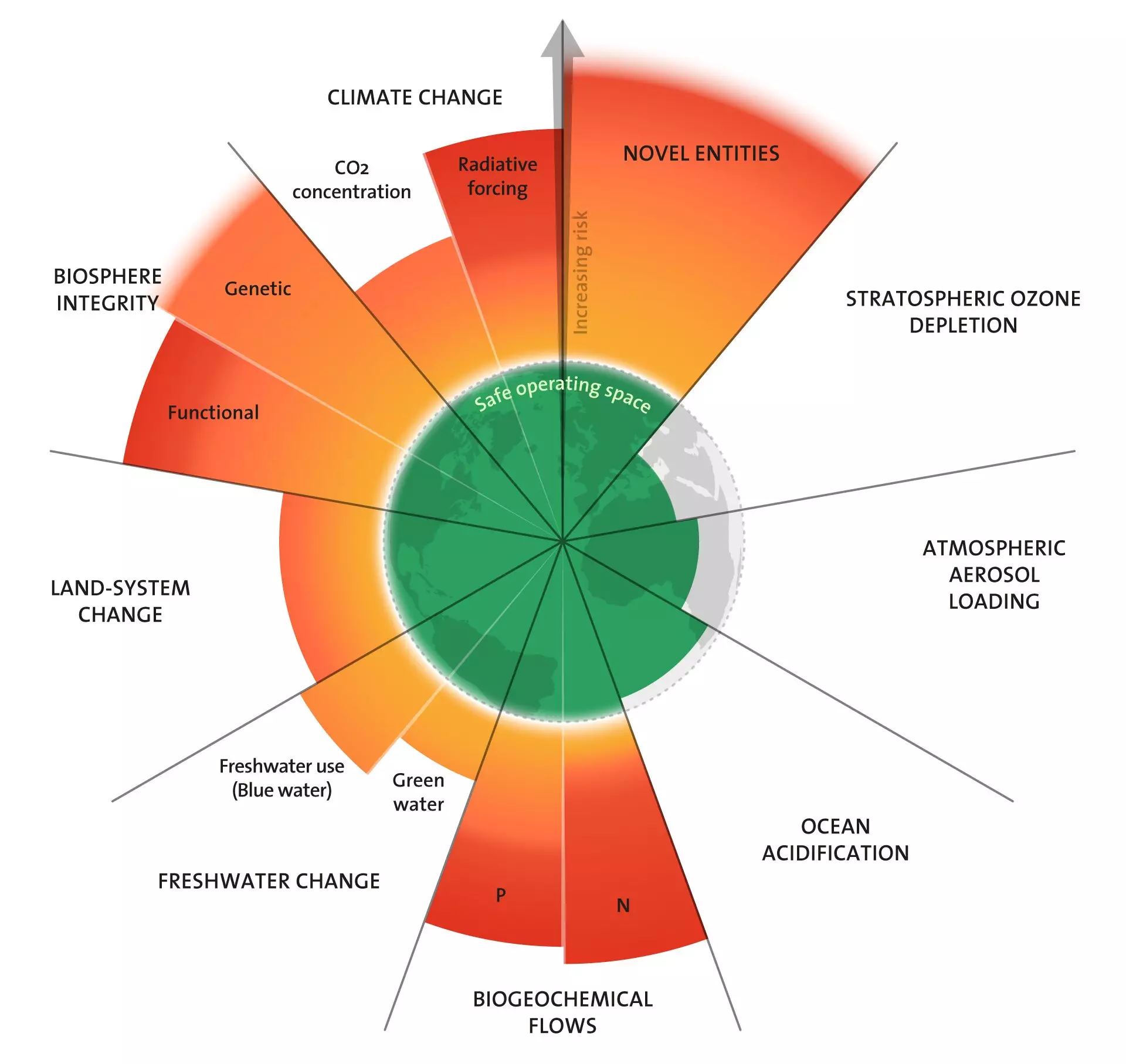Human activities are having an increasingly significant impact on the planet, posing a risk of triggering dramatic changes in Earth’s overall conditions. Over billions of years, the interaction between life and climate has controlled the environmental conditions on Earth. However, activities such as land use change, alterations in water and soil levels, the introduction of synthetic chemicals, and greenhouse gas emissions are disrupting these crucial interactions. This article critically examines a recent study that updates the planetary boundary framework and highlights the urgent need to address the growing transgression of these boundaries.
The Planetary Boundary Framework
The study introduces the concept of “planetary boundaries,” which represent components of the global environment that regulate the planet’s stability and livability for humans. Breaching these boundaries is primarily caused by human-driven activities that impact these components. The planetary boundaries framework aims to define a “safe operating space” for humanity, setting limits on human activities to prevent potential irreversible changes in Earth’s conditions. For the first time, the study presents metrics for all nine boundaries, revealing that six boundaries are currently being transgressed.
The Alarming Trend
The study’s findings highlight the worrisome trend of increasing transgression of these boundaries, except for the degradation of the Earth’s ozone layer. Katherine Richardson, the leader of the study, parallels the situation to high blood pressure, stating that crossing these boundaries is a clear warning signal. Although it does not guarantee a disaster, it significantly increases the risk. Richardson stresses the importance of reducing the pressure on these six boundaries for the sake of present and future generations.
The study emphasizes the need for greater focus on understanding the interactions between the planetary boundaries. The researchers argue that solely addressing human-caused climate change is insufficient to protect the Earth system from harm. Johan Rockström, the original proposer of the framework, emphasizes that alongside climate change, the integrity of the biosphere is critical for the planet’s stability. Saving a functional biosphere and mitigating global warming must go hand in hand.
Land Use Change and Biomass Use
One specific boundary that demands attention is Land Use Change. The increasing global use of biomass as an alternative to coal, oil, and gas has significant implications. Biomass is crucial for biodiversity as it provides energy that supports diverse ecosystems. The study reveals that humans appropriate around 30% of the energy available to support biodiversity, suggesting that the removal of this energy contributes to biodiversity loss. The authors propose the adoption of Human Appropriation of Net Primary Production (HANPP), or biomass use, as a metric for assessing human impacts on biodiversity.
The study highlights that addressing climate change and biodiversity loss alone is insufficient. The authors argue that a world operating within defined scientific boundaries is essential to navigate the rising, potentially catastrophic risks at a planetary scale. The Paris agreement, which adopts the climate planetary boundary of limiting global warming to 1.5°C, and the upcoming COP15 decision on biodiversity loss are steps in the right direction. However, concerted efforts to protect, recover, and rebuild planetary resilience are required across all planetary boundaries. The authors hope that this study serves as a wake-up call, urging the international community to limit human impacts on the planet to preserve Earth’s conditions necessary for advanced human societies to flourish.
As human activities continue to impact the planet, it is crucial to reassess our relationship with the Earth system. The planetary boundary framework provides a comprehensive understanding of the limits within which human activities can operate without risking irreversible changes to the planet’s conditions. The study’s findings underscore the need for immediate action to address the increasing transgression of the boundaries. By focusing on the interactions between the boundaries and adopting sustainable practices, we can mitigate the risks and protect Earth’s ability to support thriving ecosystems and future generations.


Leave a Reply